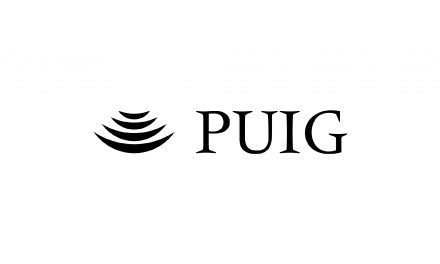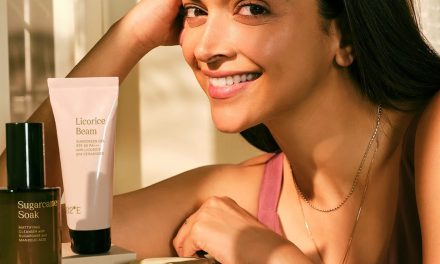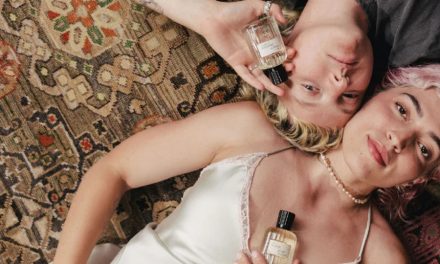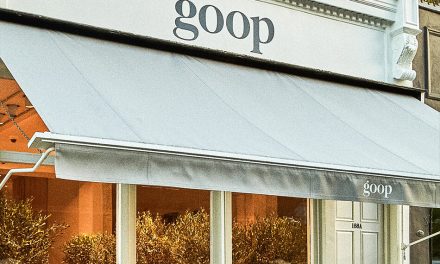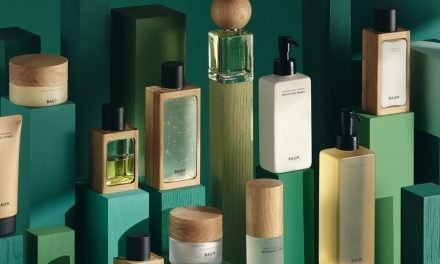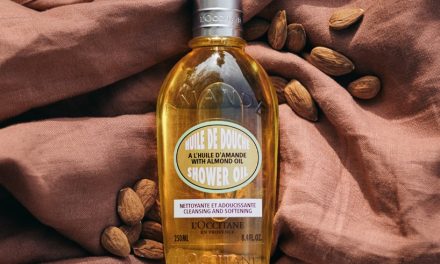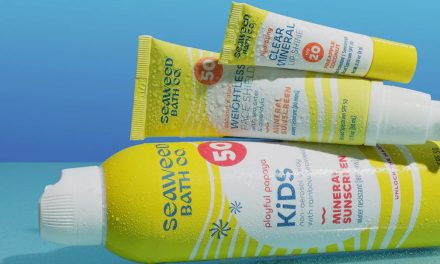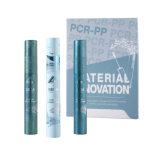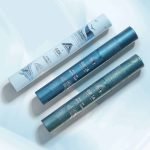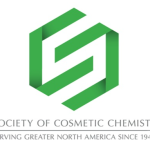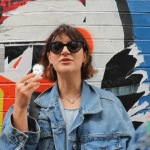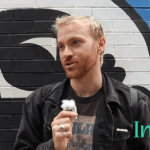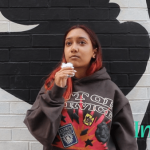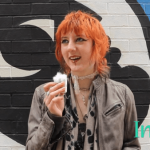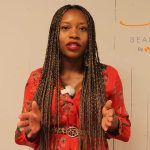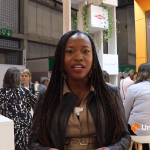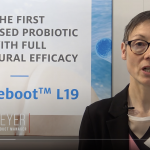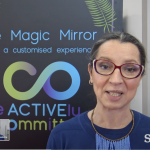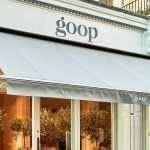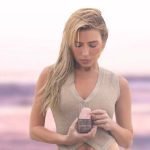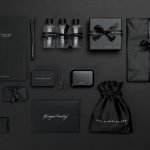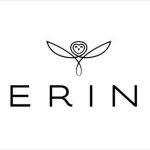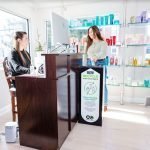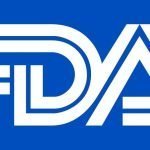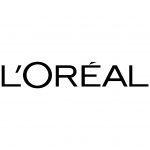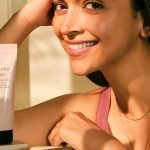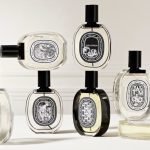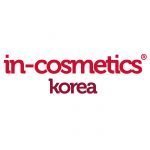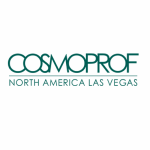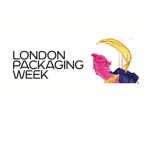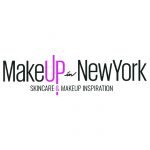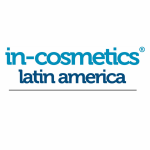
Open Podcast Transcript
Creating Cosmetics: Personal Care
[00:00:00] Hello, and welcome to In Conversation With, the monthly podcast series brought to you by the team that produced the Global Cosmetics News Feed. This year’s theme is creating cosmetics.
siobhan-murphy_1_04-26-2024_152641: This month’s topic is Personal Care and I’m your host Siobhan Murphy. Are concentrated formulas the future of personal care products? Concentrated formulas require less raw materials, less water, smaller quantities per application, smaller packaging, or indeed no packaging. One might say a compelling solution to the industry’s sustainability commitments. So why are manufacturers slow to adapt? To help you answer these questions and more, I will introduce you to this month’s panel. Hello and welcome back to Mallory Huron, Senior Strategist for [00:01:00] Beauty and Wellness at Fashion Snoops, the global trend forecasting agency. And joining us for the first time on the panel, Jennifer Kaplan, Director of Sustainability at C16 Bioscience, the makers of Palmless, and Maggie Spicer. Founder of Source Beauty, a legal and ESG advisory firm. Welcome everybody. Mallory, let’s start with you. What consumer challenges have fashion snoops been tracking and where are the opportunities for creating personal care products in 2024?
mallory_1_04-26-2024_102642: You spoke to it in your opening, but I think certainly, the idea of more compact, multifunctional and efficient products is high on top of consumers want list, you know, where, you know, reaching a point right now of, lifestyle fatigue where consumers just want that routine that delivers.
They want products that deliver their [00:02:00] patients has really run out for products that, don’t, do what they say on the tin as the saying goes. So I think Certainly, an element of multifunctionality is super important for consumers right now, whether it’s a product that can be used across hair, face and body, whether that’s, multiple benefits per product and multiple usages, changing textures.
This is something that consumers are looking for because they want that value add to all the products. Another consumer challenge that certainly ties directly into this is the idea of affordability and accessibility right now. Consumers are definitely still willing to invest in their routines and the ritual of beauty and personal care, but those products have to deliver and all the better if they’re more affordable and accessible.
I just saw, an article the other day about how consumers are feeling that beauty prices are. Thank you. Definitely entering a [00:03:00] space where they can’t follow. And so I think that there is a limit to, the so called lipstick effect of, consumers being willing to invest in, in beauty, when all other sectors are not seeing as robust growth.
And I think for sure, consumers are looking for that. , for that value for their products. So I think definitely the opportunity is to create products that have that value that offer those multifunctional benefits. Certainly we’ve seen this within the whole skinification movement. Making those facial level actives and adding them to, products like deodorant, body care, scalp care, hair care.
And so that there’s a full body attention to detail and added, indulgence and, luxurious factor where. Consumers can really get into the ritual of personal care. So certainly that’s a path forward for, opportunity. Of course the other big challenge and opportunity that we’re seeing [00:04:00] now within personal care is just inclusivity in terms of making products that are more inclusive to a diverse range of consumers, really looking at.
All consumer types and considering who is not being catered to right now, what are the, open, opportunities to create a product that speaks to a need that may be niche, but is much needed by consumers. I think we’re seeing more of those right now. We’re seeing more of those enter the market.
We’re seeing these niche, , these niche products and we’re seeing better options. But more inclusive options for consumers, but I think the industry has a long way to go. And to me, that is a huge opportunity for creating personal care is, quite simply look at what consumers need, look at who is not being catered to and what needs are not being met by personal care products and then formulating, to address those needs.
siobhan-murphy_1_04-26-2024_152641: And at Palmless, Jennifer, where are the consumer challenges and what are the opportunities [00:05:00] for your brand?
jennifer-kaplan–she-her-_1_04-26-2024_072644: Well, first of all, thank you for having me on. I’m excited to be here. At Palmless, we make a bio similar palm oil alternative, grown in a lab, not on trees. And, , our focus really is about decarbonizing and reducing the environmental impacts of ingredients, particularly palm oil, which is a common problem. Ingredient in personal go. 70 percent of personal care and cosmetics contain some form of palm oil, but it’s often hidden. It’s not called palm oil on the label because there’s so many hundreds of derivatives that are used in the personal care and cosmetic space. So our goal really is to reduce the environmental impact. , largely palm oil is associated with deforestation, and again, the emissions and the human rights violations associated with that particular category and. We think there’s tremendous opportunity and we see this with our customers [00:06:00] that, there really is a move towards greater sustainability to cater largely to the millennial and Gen Z crowds of consumers who really care about these things.
They care about ingredient integrity in their products and, they want to know what’s in it. And the transparency is not a terrific yet because it’s very hard to get rid of certain. Commodity products like palm oil that are, very difficult in terms of traceability. They’re very difficult to replace. They have very unique characteristics that make them very desirable and personal care and cosmetics. And so we think there’s a tremendous opportunity for greater transparency, greater environmental stewardship, lower environmental impacts in the value chain for personal care and cosmetics, starting with innovative products like.
What we do, but there’s also, , similar products and other categories being developed, in biotech and in the lab. And so we know that consumers want to know what [00:07:00] is in their products, and they want to know that, for example, it might be deforestation free and there is no such thing as deforestation free.
Palm oil today, even RSPO, which is responsibly sourced palm oil cannot be guaranteed to be deforestation free. So we think there’s opportunity for manufacturers and brands to be more transparent and, start really making commitments to. To ingredient integrity along the lines of having third party certifications, like fair trade ingredients or deforestation free ingredients.
And we think that’s, where there’s a lot of opportunity, because all of these biotech products, not only are biosimilar and have equal efficacy in their products, but they also require a lot less land, often a lot less water, and also not cutting down our precious rainforests.
siobhan-murphy_1_04-26-2024_152641: And at Source Beauty, Maggie, certification, is that the opportunity for personal care [00:08:00] category?
maggie-spicer_1_04-26-2024_102643: Thank you so much for having me. And it’s a great question because there are so many tools in the brand toolkit right now for not just sustainability, but innovation generally. And I think, what Mallory made a good point earlier is that there are Shoppers right now who are thinking about value, but they’re also thinking about values on both sustainability and social impact. And so where there’s a real opportunity for brands right now is to explore all the modalities for engaging with their consumers. Certifications are a great way to do that because it can be conveyed visually. Most brands will communicate third party certifications that they’ve achieved through on pack imagery. That can be an incredibly effective way to communicate with a consumer. The flip side of that is that there is also a lot of confusion in consumer, in beauty and personal care right now. Around what a lot of these images and certifications actually mean a [00:09:00] leaping bunny, for example, doesn’t always mean a product has been leaping bunny certified. And so what we’re seeing in the US and in the EU and other overseas markets is a real kind of crackdown on how brands are communicating. Things like certifications and how they validate their sustainability credentials and the substance with which they’ve achieved those certifications. So brands are really in an interesting time where there is a consumer perception issue that there’s a lot of value that they can derive from, but they also need to be careful. If you’re engaging in something like a third party certification scheme, you want to really narrowly tailor how you message. The value proposition of that certification and then for brands who are going beyond certifications and are looking farther upstream in their supply chains to things like packaging materials and even their raw materials. The innovation there is really [00:10:00] endless. And I’m excited that Jennifer is part of this conversation because C 16 really represents this new wave of synthetic sustainable materials that are empowering brands to communicate an emphasis on sustainability and social impact without having to compromise on the quality and efficacy of their formulas.
siobhan-murphy_1_04-26-2024_152641: And thinking about innovation, Mallory, What technical challenges have FashionSnoops been tracking and where are the opportunities for creating personal care products?
mallory_1_04-26-2024_102642: Well, conveniently, you spoke to this, when you introduced the topic because I think the number one challenge and opportunity for personal care is creating more compact, formulas, formulating for less water, formulating for smaller size packages. I think we’re really seeing this push, , to take away these big, Huge bottles off of, the average consumer shelf to make personal [00:11:00] care less of a space issue, not only for the convenience of the average consumer, , but also for, the environment for shipping costs, for the carbon footprint and we know that consumers are really Starting to see the value of, condensed formulas, waterless formulas, in terms of they’re more concentrated, they’re travel friendly, they’re usually mess free.
So they’re seeing the value there as I spoke to earlier. So it’s not just do this for the environment. It’s, this is going to save you money. This is going to give you a better product as well. So I think. Really creating, those more condensed, waterless formulas is going to be key, , just in terms of preserving resources, but also speaking to those consumer needs, that I mentioned earlier.
It’s going to be crucial to, in order to advance sustainable interests to, reach the average consumer, , to persuade them by doing something in their interest, this, by providing products that take up less [00:12:00] space, but offer more benefits. , and that’s what creating condensed, waterless formulas can do.
And so getting their buy in, by crafting smart, intelligent formulas is going to be key. And then I think the next technological challenge that we’re seeing, And this is, something that’s being addressed and being, we’re seeing this real time is just, learning how we can scale up some of these biotech, , ingredients, we, there are so many amazing innovative ingredients, that are being created by biotech, , every day, but the, until
we can scale them up to the point of mass market, availability, they’re not going to make a dent, so I think, finding the funding, finding the right, tech to scale up some of these amazing ingredients is going to be key to really replacing these unsustainable actives that the beauty industry has been relying on for far too long.
siobhan-murphy_1_04-26-2024_152641: So scaling up, Jennifer, is that the technical challenge for Palmless in the personal [00:13:00] care space?
jennifer-kaplan–she-her-_1_04-26-2024_072644: Yes, I think Mallory hit it on the head. The reality is for, , a product like a palm oil replacement, we have a centuries old, agricultural system that is very well developed, very highly efficient. , palm oil happens to be a very highly efficient plant to begin with compared to other, , Agricultural crops and vegetable oils.
But above and beyond that, the external costs of that industry have been largely passed on , to the communities that live there and consumers of the products that buy it. So , it’s artificially inexpensive. And so we have cracked the technology piece of how to make palm oil in a lab. We actually produce at scale. We’re very fortunate that we are a little bit ahead of the curve and some of our, other biotech companies and that we, we currently do that. But right now our big challenge is. The cost down on that to try and get it cost competitive, [00:14:00] because although manufacturers and of course consumers want these environmentally preferable ingredients, they don’t want to pay more for them.
And I don’t blame them. We don’t blame them. No one does. So our real technological challenge is bringing the cost down. Yes. Many people have scale up challenges. There is a lack of manufacturing capacity for these biotech, especially, fermentation, which is what we do. But a lot of the biotech manufacturing capacity is quite low.
People are furiously building factories around the world to, Accommodate that emerging capacity need, but it hasn’t quite caught up yet. So, yes, scaling up capacity on the manufacturing, but also driving the cost down to a point where manufacturers feel that even if there’s a slight price premium, it’s worth it because of the extraordinary benefits, both environmental and actually. In terms of what the active ingredients are, because [00:15:00] many biotech products have a unique bio, bio actives in them as well. So, yes, scale up, is definitely 1 of the main things that are people talking about cost down, though, bringing that cost down is going to be key.
siobhan-murphy_1_04-26-2024_152641: And in the ESG space, Maggie, , at Source Beauty, what technical challenges and opportunities are you seeing?
maggie-spicer_1_04-26-2024_102643: It’s really a question of taking a holistic approach because I think a lot of brands are really struggling right now to understand how to engage in the ESG space in a way that makes sense for them as a company and so for people who are unfamiliar with the ESG framework, it is a financial reporting framework essentially that covers material issues relating to environment to social and to governance. So that is going to capture what we traditionally think about when we talk about sustainability. What is your environmental impact all the way from your upstream raw material sourcing to what are [00:16:00] the shipping and logistics modalities that you’re using, to, , traditional topics like sustainability and packaging. We have social issues and those intersect with the human component of how we operate as businesses. Some of that deals with things like social impact and sourcing, is there forced and child labor in our supply chain, which, unfortunately, for a number of raw materials that we use in beauty and personal care, that is still an issue today. And it can also go to employee health and safety. , we saw this during COVID, there was a real, a real struggle with how do we reopen as an industry, which, Relies on in person goods and services and protect the people that form the backbone of our business and then governance and governance is really, I think, now the kind of next territory of where responsible businesses are starting to engage because this gets to core business operations. Do you have things like a conflict free minerals policy? Do you have a deforestation [00:17:00] policy? What is your supplier code of conduct? These are kind of foundational business practices that we historically saw in very large companies, but now I think smaller and independent brands are starting to recognize that they’re in a really critical role in Engaging in these types of practices and then understanding how those practices inform the day to day decision making that they’re doing as a brand. So in the ESG space, I think it’s really that we’re in a new kind of territory for beauty and personal care where, you know, engaging in sustainability is table stakes. Even if you’re not a sustainably positioned brand necessarily, a lot of times this just makes good business sense. And so we’re seeing a more commonplace adoption of ESG topics. And we’re seeing how that can get rolled out into not just niche impact focus brands, but really brands across every [00:18:00] size and scale within the industry.
siobhan-murphy_1_04-26-2024_152641: Indeed. And thinking about responsible businesses, Mallory, what environmental challenges have fashion snoops been tracking and where are the opportunities for creating personal care products?
mallory_1_04-26-2024_102642: I think, just from a trend perspective, what we’re seeing right now is a huge demand for, no compromise products. So that means a product where both the packaging and the formulation are sustainably designed and engineered, looking back at the first wave of sustainable green beauty.
It was focused, a lot on. packaging, we saw a lot of messaging, rightly so, of course, around the overuse of plastics and unsustainable single use materials, et cetera, et cetera. And so we saw a lot of brands respond quickly with, packaging updates, , and then [00:19:00] consumers turn their minds to, Oh, well, there’s a formula inside of this packaging as well.
, that needs to be sustainable too. And we saw that. pivot into sort of an odd direction where we saw this huge zest for a while of, 100%, 98%, whatever it is, natural ingredients. And so there was a run on, boasting and claiming, how much percent of naturalities in your formulation, when of course it can be a natural, 100 percent natural formulation, completely unsustainable and completely unethical.
And so then consumers became wise to that as well. And now what they really want is this new generation of super educated, plugged in consumers want both a formula and packaging that is sustainable. , they don’t want to compromise anymore. To a certain extent, if a formulation or an ingredient is super, So sustainable and so innovative and it’s sustainability.
They’re willing to overlook a little bit of plastic packaging and vice versa. If, the [00:20:00] packaging is really sustainable and unique and innovative and the, formula is not necessarily where it needs to be, they’re willing to overlook that as well, consumers are willing to overlook a little bit of, give and take, if, something is truly remarkable or, , and, very innovative, but by and large, they want that product that makes them feel good about buying it for the environment.
So they, they want to know that brands have considered every step of the process. Again, , in terms of the knowledge sharing economy, across social media. We see elements of the process that consumers had no idea about before being exposed. We have, 23 year olds on TikTok who are, self proclaimed experts on, global shipping industries.
So there’s nothing to hide from consumers anymore. They may not be experts, but they certainly are more aware of aspects of the process, of the beauty industry than they ever have been before. And these sustainably minded, educated, tuned in consumers [00:21:00] want to make sure that they’re supporting brands who have considered, every step of the way from farming to the local communities that the farming is supporting to, how is the ingredient process?
What happens to the waste of the ingredient? And how is. This manufactured, what’s the sustainable credentials of where this is manufactured? What is your shipping process like? Can we make that more sustainable? So I think that’s really, a world of opportunity. It’s a big challenge, but it’s a world of opportunity for brands to really be good actors within this space, and seek to do better.
siobhan-murphy_1_04-26-2024_152641: So thinking about the process, Jennifer, What are the environmental challenges and opportunities at Palmless in the personal care category?
jennifer-kaplan–she-her-_1_04-26-2024_072644: Yeah, again, We are very focused on the environmental impacts. But of course, , the side effect of that is that if we improve the environmental impacts, we will also improve those social impacts and impacts, kind of egregious [00:22:00] production practices that occur in the Pomo area. Industry, but we, like everyone else are primarily focused or started out being focused on greenhouse gas emissions reductions and decarbonizing supply chains. That really is where a lot of the money is. That’s where our brands and our customers want to focus. So we are deeply focused on driving down. Emissions in the production process, but above and beyond that, what we found is, of course, it makes perfect sense that, the land use efficiency is also a huge issue.
We have precious rainforests commodities. Many of these tropical raw commodities are grown. Only within 10 degrees of the equator. That’s all precious rain forest that, , is very valuable to the entire planetary ecosystem. And we can’t afford to be cutting it down to, to grow ingredients for cosmetics.
It just doesn’t make a lot of sense. So we focus on land use efficiency also. And we have found that we can [00:23:00] produce palm oil, a commensurate amount of palm oil on a much smaller footprint. So for example, a 20 hectare. Biomanufacturing campus can produce 250 times more palm oil than a hectare of tropical forest. That industry really has not been able to gain tremendous efficiencies. And of course we can. And so we really believe that land use efficiency, greenhouse gas emissions, and of course, like I said, all the ancillary benefits that come from removing those kinds of production systems from the , tropical regions. And, there’s a lot of concern and we hold this too for the small holder farmers that might be impacted if there is a transition away from some of these commodities. But the reality is the market is so huge that there is plenty of room. , for the small holders and that we just hope that the attention we bring and the pressure of having an additional supply chain channel will squeeze out the bad actors in the middle, the ones who really are most [00:24:00] exploitative, the ones who do not care about the environment. the ones who, are not being mindful stewards of our planet. So we are very much in support of smallholder farmers. We are very in support of Reforestation efforts. We donate money. We partner , with our fabulous organizations like, one tree planted and stand for trees to make sure that reforestation efforts continue.
We very much have a social mission built into our brand. And, I think consumers care about that. And again, there is going to be a cost correction at some point. The external costs of growing things in the tropics and cutting down trees to do it will catch up to these industries and the cost parity will be reduced and manufacturers.
And we know it cause we’re talking to, to, to all of them. They all want future forward, innovative development. , ingredients and supply chain options. And, I think that the world really [00:25:00] is focused and, like both Maggie and Mallory said, because consumers are becoming so much more savvy and they care so much more and they’re, demanding these activities and these ethical. Operational activities from their brands and manufacturers. So I think the tailwinds are good. I think we’re seeing a lot of progress and, largely driven by both consumers on a pole, but also the manufacturers see what’s coming and they do long term planning and risk mitigation activities. And they see that the way they, obtain a lot of these raw materials cannot be business as usual anymore.
siobhan-murphy_1_04-26-2024_152641: And thinking future focus, Maggie, at Source Beauty, what advice do you give your clients about the environmental challenges for personal care products?
maggie-spicer_1_04-26-2024_102643: I think it’s really about not being scared to explore all the different options that are available in order to address environmental sustainability. I think a lot of brands get very [00:26:00] intimidated, because it seems like a huge issue area to tackle. How do we address our packaging?
How do we do Assess shipping and logistics and all the modalities for how we move our goods. It sometimes can feel like you’re just taking a drop of water and putting into the ocean and hoping you’re making a difference. And so what I really try to do is work with. Especially on the brand founders that I work with, make sure that they understand what their unique perspective is as a brand and not try to just do what everybody else in the industry is doing. I think there are some kind of low hanging fruit efforts that most brands will try to tackle first when it comes to sustainability. They’ll look at the materials in their packaging. Ideally they’ll be able to say that the packaging is recyclable, but even that, is an area that’s very quickly evolving and because I’m an attorney, I will frequently also pull in guidance on what are the emerging regulatory standards that we’re having to face as an industry, and that covers [00:27:00] everything from supply chain transparency, which, I know Jennifer and Mallory have already alluded to brands now have a real imperative, not just from a consumer facing standpoint, but also there are new regulations, both in the U.
S. And abroad. That are requiring companies to have an elevated standard of diligence for the raw materials that they’re using, either, for example, to ensure that there is no forced labor in their upstream materials or that they’re not tied to deforestation as , the case with palm oil and a few other raw materials. So you’re talking about not just upstream materials, but then there are also new regulations on how do you market your products and this. Movement against greenwashing that has been led by consumers over the last few years has become really powerful. I think there was such a big impetus and brands wanting to make green claims.
So saying that their products are sustainable or eco friendly or good for the environment [00:28:00] with the green and clean movement that. Eventually this kind of caught up with us as an industry because there really were no standards and guidelines for how you substantiate those claims. And consumers are making purchasing decisions based off of what they see on messaging and what they see on pack. So we now have elevated standards that are developing in the U. S. We certainly have elevated standards in the EU market on when a brand wants to stay that they’re recyclable. For example, their packaging is recyclable. Do you actually have a product that is not just made of recyclable materials, but has it been designed in a format that can actually be recycled in the community you’re selling it into? And this is a much more nuanced conversation than, Oh, we made it out of, 40 percent PCR, and we believe the material at its end of life is recyclable. So we’ll just slap a chasing arrows on it. That’s no longer going to work. And so what I really work with brands on [00:29:00] is, Let’s figure out the issues that make sense for you as a brand to tackle on sustainability and across all of these other pillars of responsible business. And then let’s overlay an understanding of what is the regulatory landscape look like and how do you use those guardrails to make sure that as you scale and as you position potentially for a retail partnership or even an IPO or an acquisition that you’ve accounted for all those risks. It all the way throughout your operations so that it just becomes a good business decision rather than something that is siloed in this box of environmental sustainability.
siobhan-murphy_1_04-26-2024_152641: And thinking about regulatory Mallory, what are the regulatory challenges have fashion snoots been tracking and where are the opportunities for creating personal care products?
mallory_1_04-26-2024_102642: What Maggie says is 100 percent correct. , the main thing I wanted to highlight is the need for marketing regulation, and [00:30:00] misinformation and how needs to be curtailed by some form of regulation. , of course the U S still remains within beauty regulation, the wild west, in terms of how behind we are in most of our beauty regulation and how we even define beauty from a federal standpoint in terms of an industry.
, but. What I’d like to speak to in particular , is what was just brought up, the idea of, the greenwashing movement and making claims because, we have an oversaturation right now of misinformation, and it’s very heavy within, the quote unquote clean and green, of course, those, even those two terms are, have really no definable meaning, and have just been used By and large to sell product, there’s a huge amount of misinformation, and , it’s all smoke and mirrors to confuse consumers into thinking that they’re buying a product that they feel fits with their [00:31:00] values, and it’s, it’s wrong.
And as. There needs to be more internal calls for change from within, but also governments and, regulatory bodies need to step up because , this is not sustainable , in terms of its longterm effects. We have, generation of consumers who are who their hearts are in the right place in terms of we know that most consumers want to buy products that are not unsustainable.
They want to be sustainable. They want to buy products that, are going to support, , good initiatives for the planet and it’s going to make them feel good, we have a generation that wants to do the right thing, but unfortunately, because the market has been so over flooded with green, organic, biodegradable, , reef safe.
This is the new one right now that we’ve seen. We’re seeing a huge amount of backlash too, because, reef safe really after that initial surge of reef safe sunscreen, of course, As many cosmetic chemists correctly pointed out, there is no sunscreen [00:32:00] that is technically reef safe, even if you change the formulation of the sun protection.
It’s a consumer education issue, sure, but it’s also an issue of regulation and there just needs to be better regulation for marketing in particular, because, this is how, as was, very accurately mentioned, this is how consumers making their purchasing decisions. They’re picking up a product, they’re looking, They see the leaping bunny, , organic, PETA certified, whatever it is they’re looking for.
There’s few little symbols of certification. They’re looking on the front of the packaging. They see buzzwords like organic, clean, , on the back, they see a blurb about we do good by the planet and they think, okay, good, this is sustainable. Little do they know that they could have just bought a product that is.
Hilariously not sustainable. We really need regulation to step in to prevent that sort of interaction from happening. , and again, especially within the U. S. Who knows , when that interruption of that, smoke and mirrors with the consumer is going to happen, but certainly this is something that needs to [00:33:00] change.
siobhan-murphy_1_04-26-2024_152641: And thinking smoke and mirrors, Jennifer, biotechnology is a new category. So what are the regulatory challenges and opportunities at Palmless in the personal care category?
jennifer-kaplan–she-her-_1_04-26-2024_072644: First of all, I just want to echo what I think Maggie and Mallory said , is spot on , the claims issue, the greenwashing regulation is, is moving in the right direction, but these are very nuanced conversations and very hard to manage those trade offs. But I, they did a great job of talking about it.
So I will move on. The big, regulatory movement we see is around, of course, Not surprisingly, deforestation, there’s new rules in the EU called the EU deforestation regulation that came into force last summer. But companies were given 18 months to come into compliance. And Maggie will do a much better job describing this than me. Basically, it’s going to require any goods any palm oil, and there’s several other commodities, six other [00:34:00] commodities that are associated with deforestation to be proven to be deforestation free, by the end of this year. It’s a very heavy lift, but it is absolutely the right type of regulation.
We see some pushback, from even EU Ag, , commissioners, but certainly the palm oil and soy and cocoa and coffee, rubber industries, all those commodity industries that are impacted by this. But this is really important legislation. And we’re seeing other, , similar regulation coming out of the books in the UK, there are various States in the United States that are also pushing for similar regulation. And again, today there is no deforestation free palm oil and those other commodities as well. There’s just no such thing because no one’s been forced to do it. And it’s been business as usual. Like I said, these are. Centuries old industries that , are very well entrenched and there’s been no real requirement for them to be deforestation free, but, with the [00:35:00] EU launching this very important regulation, I think we are really going to see more of it. It’s super important. Again, we support it from both a moral and, ethical perspective. Perspective that’s why we formed our company because of the deforestation that we saw and figured there was a better way to grow these commodities, but it also makes good business sense. Like I said, it’s going to be much less impact on the planet.
It’s going to be less impact. On the communities that support these commodities. And these are the kinds of regulations that we are really believing deserve support and would like to see more of. But certainly, even without us out there, these regulations are coming. And again, there will be market corrections to deal with them. And we’re hoping that they continue to spread.
siobhan-murphy_1_04-26-2024_152641: Maggie, is deforestation or microplastics the hottest regulatory challenge at the moment?
maggie-spicer_1_04-26-2024_102643: Oh, I don’t think you could [00:36:00] pick one or the other. What’s interesting is I think microplastics gets. It’s a lot more attention. It’s certainly more a more pernicious problem just because the sheer scope and breadth of microplastic pollution in our oceans and waterways is incredibly difficult for us to even assess, let alone start to tackle. So I feel like there is a lot of attention on that right now. And for good reason. That really gets to, some of the core elements of the packaging. Challenges that we have as an industry, which is that it is very difficult for us to get away from plastic and potentially impossible. There are certain material limitations that we have when we design personal care products. There are certain formats that we use. A number of products obviously will go in the bathroom or the shower with the consumer. We don’t want glass in those environments. So that really limits the sustainability of materials we can use to. Things like aluminum and then, of course, things like plastic, and there are a [00:37:00] number of efforts that we as an industry are making to engage in more recyclable plastic or at least use recycled inputs, but at the end of the day, until we are really set up as a circular economy, it’s very difficult for us to get that right.
Thank you. That material back from the waste stream and actually bring it into a source where it can be used as a raw material again So there is this conversation around microplastics and just plastics generally that is being led out of the EU where there is a real emphasis on circularity in design and you essentially design a product with the expectation that it should be able to Be broken down into its component parts at the end of life of the main product.
So, when your lotion bottle is empty, can you take the pump top off? Can you put that in a certain way stream where it’s going to be brought back in? Use the bottle, bring that back into another way stream. And to divert [00:38:00] materials to where they can actually be reused. That is something that we’re not really set up to support right now, but there is such a consumer demand for it. And again, on the regulatory piece, we’re seeing more emphasis, especially out of the EU, but also in the U S with things like extended producer responsibility to emphasize that the brands, the manufacturers, even the retailers, they are all responsible players in helping us. Address the micro plastic and plastic pollution issue. And so the onus isn’t really just on consumers. We all have a part to play. On the deforestation piece. This is, I think, now getting a lot more interest from consumers because this really gets to issues that most people are already bought in on. We don’t want to see our rainforest cut down. We don’t want to see a loss of biodiversity when we understand what the effects are of these types of practices, we have animal habitat loss. We have worker exploitation, unfortunately, in [00:39:00] many of these areas. These aren’t areas where consumers need a lot of convincing to buy in, and it’s really a matter of how do we align regulatory pressures, meeting consumer expectations, meeting the realities of what the industry actually looks like and what we can support. So Jennifer was talking about the EUDR, the EU Deforestation Regulation, and this is really setting a much more elevated standard of diligence for brands that use commodities such as palm oil, cocoa butter. Obviously, wood that are tied to deforestation and what it’s going to ideally force the industry to do is not just engage with their suppliers farther upstream to really ensure that there is no deforestation.
There’s no slash and burning going on in order to get the raw material, but it’s also going to shine a bit of a light on and I know, Jennifer, you alluded to this kind of the unseen. Area where most of these [00:40:00] commodities exist in beauty and personal care, which is not as a direct ingredient. If you were at, CVS or Ulta or Sephora, you would not usually see palm oil listed on an ingredient list. What you would see are a number of functional derivatives, so the sulfates, the things that are going to give you the lather, the ingredients that truly provide the efficacy. In a lot of products, they’re palm oil derivative. And that is much harder for a consumer to understand and for a brand that maybe doesn’t produce their own materials to really engage with. And so it’s going to now pull in this intermediary piece of who are the contract manufacturers that are actually producing these goods? Who are the ingredient processors who are essentially creating palm oil derivatives from this raw material? And how are they engaging in these supply chains? So I don’t think , there’s one issue here that, that rises to the forefront in terms of like being the number one, but it’s really, there’s [00:41:00] a broad ecosystem of issues that brands are having to face.
And I really enjoy getting to help brands understand, what are the particular areas where you can actually do some good and maybe get a better handle on your supply chain from a business perspective, even that will allow you to future proof your operations. While also checking some of these sustainability boxes,
siobhan-murphy_1_04-26-2024_152641: And thinking of future proofing operations, Mallory, can you describe the future of the personal care market in three words?
mallory_1_04-26-2024_102642: Hmm. It’s a tough one. I would say, first word would be inclusive. So again, speaking to those things I mentioned, , at the beginning of the podcast, really identifying those consumers who haven’t been addressed by the beauty industry and by, , their product needs and seeing what those needs are and creating products for them.
I would say the next word would be multifunctional. So products that, deliver more value for the consumer in [00:42:00] terms of benefits or usage, or even just formulating to those condensed water free formats so that it’s, a value add in terms of convenience or longer shelf life. And then lastly, I’d say radically sustainable, so technically two words, but I’d say, radically sustainable in that, again, Speaking to those pieces of considering all sides of a product, , the entire lifespan of a product, considering end product, end of life from the beginning, and regenerative cycles, in order to cater to not just, , this, of course, very plugged in, engaged and educated consumer base we have now, , the reality of our environment and the planet, this is a self beneficial thing to do to consider the environment.
So I think inclusive, multifunctional, and radically sustainable is how I would describe the future of personal care.
siobhan-murphy_1_04-26-2024_152641: And for you, Jennifer. Can you describe [00:43:00] the future of personal care in three words?
jennifer-kaplan–she-her-_1_04-26-2024_072644: Sure. I certainly can try. I think the 1st word I would use would be, , transparent. I think we are going to see greater transparency and many of the things we talked about today. Greater transparency in the trade offs. Involved in many of these sustainable choices, greater transparency and ingredient integrity, greater transparency in general, as both the regulatory environment on greenwashing and green claims gets tighter and consumers get smarter and start demanding it. I think also innovative. I think we are going to see novel ingredients, new approaches, new ways of tackling some of the more entrenched old school ways of creating products and, engaging with supply chains and value chains. I think we’re going to see a lot of innovation that includes both high tech and low tech options. And then also I think bio based, I think we are moving away from fossil fuel. Categories. I [00:44:00] think we’re going to be, redefining some of those more vague terms. That we’re already alluded to today. Green, clean, natural. These terms don’t mean much. And I think consumers are getting smart enough that they’re going to want to really understand that their products are bio based and bio derived and do not come from fossil fuels.
siobhan-murphy_1_04-26-2024_152641: Indeed. And for you, Maggie, can you describe the future of personal care in three words?
maggie-spicer_1_04-26-2024_102643: I’m gonna cheat and do a three word phrase. So I would say the future is probably in designing for innovation. To me, that is something that we’ve we as an industry have always been good at. And I think now the innovation is not just on products and efficacy. It’s really deeper than that. It’s innovating in terms of packaging.
It’s innovative in terms of building supply chains that didn’t exist and engaging with them. The natural environment in a way that we couldn’t have even comprehended 50 years ago. So to me, there’s an opportunity for brands that want to think about [00:45:00] not just what it looks like today, but how do we think about the future when we build a company and build a brand? It starts with the design and it starts with incorporating all of the things that we’ve talked about today, all of these challenges and opportunities. At the very outset of the brand, rather than tacking it on at the end as a , marketing exercise, because I think the brands that are able to do that right from the get go are going to be the ones that we see last a very long time.
siobhan-murphy_1_04-26-2024_152641: And with that, I would like to thank my guests, Mallory, Jennifer, and Maggie
for joining me today and to you for listening.
Are concentrated formulas the future of personal care products?
Concentrated formulas require:
- Fewer raw materials
- Less water
- Smaller quantities per application
- Smaller packaging or no packaging
One might say a compelling solution to the industry’s sustainability problems.
So why are manufacturers slow to adapt?
This month’s panel:
- Mallory Huron, Senior Strategist for Beauty & Wellness at Fashion Snoops, a leading global trend forecasting agency.
- Jennifer Kaplan, Director of Suitability at C16 Biosciences, the company behind the innovative Palmless™ products.
- Maggie Spicer, Founder of Source Beauty, a legal and ESG advisory firm focused on the beauty sector.
Discuss the hurdles and opportunities in creating sustainable personal care products as we move into 2024.


